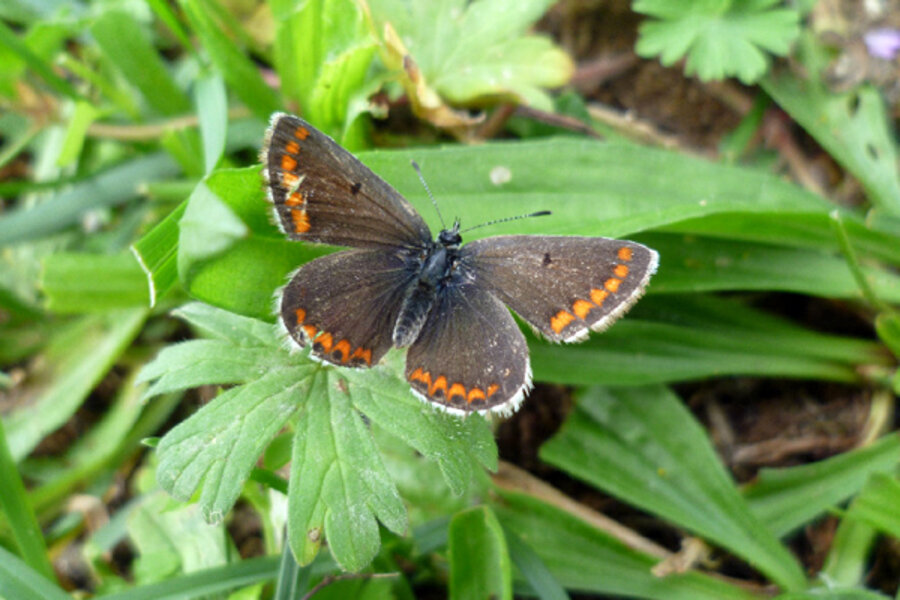Climate change allows once-rare British butterfly to thrive
Loading...
Warming in Great Britain appears to have given a little brown and orange butterfly an edge. The brown argus butterfly has spread about 49 miles (79 kilometers) northward on the island over 20 years, observations indicate.
Although it's well known that climate change can prompt plants and animals to shift the ranges in which they live, the brown argus (Aricia agestis) has widened its living quarters with unusual speed, according to an analysis of decades of data collected by British volunteers.
The butterfly's secret? A new host plant to feed its larvae.
In cooler periods, the larvae feed on the rockroses growing in warm spots, mostly on southerly facing, chalky hillsides, said study researcher Jane Hill, an ecologist at the University of York.
The same butterflies living on continental Europe also feed on geraniums, but, historically, the British brown argus larvae rarely lived on these plants. Now observations collected by volunteers indicate this changed in the 1990s, when average summer temperatures reached unprecedented warmth.
Then, the brown argus butterflies began to show up more often at sites where all potential host plants were geraniums. [Butterfly Gallery: Beautiful Wings Take Flight]
A genetic mutation or physiological change in the butterflies is unlikely, Hill said, rather it appears that warmer temperatures simply allowed them to incorporate a new host plant. (The butterflies have continued using rockroses).
Once the brown argus butterflies can establish populations on their favorite geranium, called dove's-foot cranesbill, they can spread quickly among these common plants. Other dynamics, such an escape from parasites at rockrose sites, helped out, the researchers write in an article published in Friday's (May 25) issue of the journal Science.
"It is a bit of a good news story, and we don't get many of those," Hill said. The caveat, she added, is that the butterfly's range may well be retracting in parts of its range outside of England and Wales, where the observations used in this study were collected.
You can follow LiveScience writer Wynne Parry on Twitter @Wynne_Parry. Follow LiveScience for the latest in science news and discoveries on Twitter @livescience and onFacebook.







